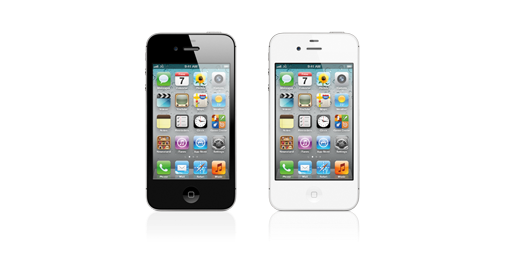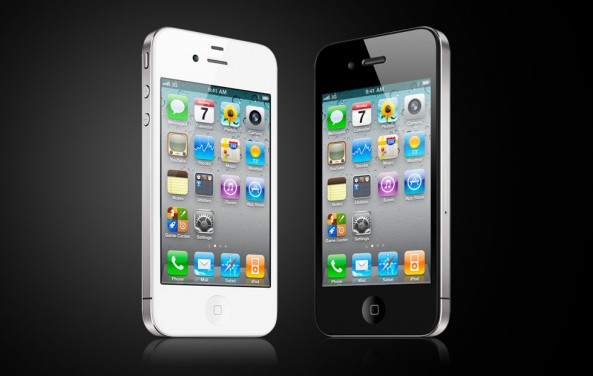Apple store is down, what a surprise

As is the case with every other Apple product release, their online store is now down ahead of the “Let’s talk iPhone” event that is taking place within the hour in which the new iPhone will be unveiled.
The site simply shows a sticky note with the words “We’ll be back soon.” They are busy updating the site and they are going to be back shortly. In other words, they are getting ready to announce the new iPhone and once the site goes back up it will be there for everybody to check out for themselves.
Taking down the store ahead of a major product announcement has become a tradition of Apples. What can we expect to see once the site goes back up? Perhaps we will see both the iPhone 4S and the iPhone 5. Maybe we will only see the iPhone 4S. Either way the insanity is almost over, so bear with us until then.
source: Apple
The site simply shows a sticky note with the words “We’ll be back soon.” They are busy updating the site and they are going to be back shortly. In other words, they are getting ready to announce the new iPhone and once the site goes back up it will be there for everybody to check out for themselves.
Taking down the store ahead of a major product announcement has become a tradition of Apples. What can we expect to see once the site goes back up? Perhaps we will see both the iPhone 4S and the iPhone 5. Maybe we will only see the iPhone 4S. Either way the insanity is almost over, so bear with us until then.
source: Apple
Apple’s Japanese site confirms iPhone 4S and Oct 14 launch, store posts images
Apple’s store websites have jumped the gun on Apple’s announcement, posting images and an October 14th release date. The Japanese site has posted the release date on its site and there have also been images leaked that show an ‘iPhone 4′-like device with iOS 5 running on it.
The images were discovered by changing the URL’s of the White and Black iPhone 4 promotional images to add the ‘S’ after ‘iPhone4′.
Apple's "Let's talk iPhone" event - Live analysis
Apple to launch iPhone 5 today
Apple Inc.'s next iPhone is arguably the most anticipated gadget unveiling of 2011 and it's taking place Tuesday.
And with any big Apple product announcement, the rumors have been flying for months -- even former U.S. Vice President and Apple board member Al Gore has fed some of the speculation.
Times tech reporter David Sarno will be in Cupertino at the big event Tuesday, covering new Apple CEO Tim Cook's unveiling of the next iPhone, iOS 5 and maybe even Facebook-related announcements here on the Technology blog.
But, as of Monday, we don't know for sure what Apple will announce -- an iPhone 5 or iPhone 4S, an all-new lower-priced entry-level iPhone, one iPhone, two or even three new models.
So let's take a look at what's been reported so far, so we can see what pans out or what doesn't...
Specifications:
The standard right now for high-end smartphones (such as the Droid Bionic and Samsung Galaxy S II) is a dual-core processor, about 1 gigabyte of RAM, at least 16 gigabytes of storage memory and an 8-megapixel rear camera capable of shooting 1080p high-definition video and a better-than-VGA front facing camera.
The iPhone 4 currently runs on the Apple-designed and Samsung-built A4 single-core processor. The iPad 2 saw the debut of the dual-core Apple A5 chip, and the next iPhone is widely expected to gain the A5 chip, bringing it in line with its Android rivals. A boost in RAM would be needed to really capitalize on a faster dual-core processor, so these go hand in hand.
The iPhone 4's 5-megapixel rear camera is considered by many to be one of the most capable cameras available in a smartphone today, even at more than a year old. Nonetheless, a rumored upgrade to an 8-megapixel rear camera is expected and anything less would be disappointing considering how widespread of a feature this has become in competing smartphones.
Up front, the iPhone 4 has a VGA-quality camera (as seen on Apple's iPad 2 and iPod Touch), and that is rumored to be getting an upgrade too. An upgrade here would make sense, in part because Apple has already upgraded many of its laptops with high-definition cameras above their monitors.
The next iPhone is also rumored to be offered in storage sizes of not only 16 gigabytes and 32 gigabytes as is offered now, but also with a 64-gigabyte option.
Display:
The size of the next iPhone's touch screen has been a topic of debate and contradicting speculation for months. Rumors have ranged from the next iPhone retaining the 3.5-inch display of the previous four generations and an increase to 4 inches or even 4.5 inches.
Apple CEO Tim Cook The iPhone 4's 3.5-inch screen introduced the "retina display" with a resolution of 960-by-640-pixel and a crisp 326 dpi (dots, or pixels, per inch). The screen is so beloved by Apple iPhone owners that rumors have persisted since before the launch of the iPad 2 that the iPad would eventually see such a dense display.
Given how much iPhone users enjoy the iPhone 4's screen, this rumor may end up not seeing the light of day.
However, the fact that the next iPhone has taken more than a year to hit stores since the iPhone 4's launch has given rise to rumors that problems with producing a larger display are what have delayed the release of the next iPhone.
iPhone 4S or iPhone 5:
Simply put, if the next iPhone has a bigger screen, it needs a new body, a new form factor. If the screen stays the same, it could make use of the same form as the iPhone 4.
When Apple moved from its second-generation to its third-generation iPhone, the name changed from the iPhone 3G to the iPhone 3GS. The form factor remained the same, but the internals were upgraded, and the S was added to the name to indicate the bump in speed and improved software of iOS 4.
Apple will launch the iPhone 4S today; 8-megapixel camera, improved optics and new GPS features

With less than 3 hours until Apple unveils its new devices at its “Lets Talk iPhone” event, The Next Web has been briefed on what consumers can expect to be launched at Apple’s Cupertino campus later today.
Sources familiar with Apple’s plans have revealed to us that Apple will indeed debut the new iPhone 4S today, featuring an 8-megapixel camera with “enhanced optics” and “more definitive GPS features” thanks to Apple’s new A5 processor.
Another of our sources told us the iPhone 4S “is much more powerful than an iPhone 4″ and “feels like the high-end device”, all but confirming that the device will feature Apple’s new A5 processor and include 1GB RAM, as tipped in previous reports, noting that the device will retain the same dimensions and design as the iPhone 4.
The 8-megapixel camera will output photos with a 3264 × 2448 resolution, the same resolution of a photo posted by an Apple employee a number of weeks ago. The 8-megapixel camera also lines up with Sony CEO Howard Stringer’s accidental confirmation that the Japanese electronic giant was to supply an eight-megapixel camera for Apple’s next-generation iPhone.
We were also told that the iPhone 5, which is rumoured to sport a teardrop design and aluminium unibody, is merely an Apple prototype for a future iPhone 5 “which won’t be available any time soon”, as the “iPhone 4S will have the same dimensions”.
With Apple adding references to the iPhone 4S in its latest iTunes Beta, the company had led many to believe that we would not see the iPhone 5 released today. With the additional information we have obtained, this seems all the more likely.
The news may dishearten many, who have held out for Apple to unveil its new iPhone, but with a new dual-core processor, 1GB RAM and a reported focus on incorporating Assistant – the pocket personal assistant – Nuance speech-to-text dictation and other iOS 5 features, Apple fans will still have plenty to chew on come 6pm BST, 1pm EST and 10am PDT, and you can catch all of it on our dedicated Apple channel – TNW Apple.
Zealous bloggers at German sites such as iPhone fan site iFun caught a snapshot of Vodafone Germany's site offering a menu of new 'iPhone 4S' models today - but there was no sign of iPhone 5.
Likewise, within the latest 'beta' version of iTunes, Apple Insider and 9 to 5 Mac reported several references to iPhone 4S - and images show the new phone looks EXACTLY like the old iPhone 4.
The 9 to 5 Mac went blog further with an - as yet unconfirmed - 'leaked' release date of October 14.

German iPhone site iFun captured this tantalising glimpse of iPhone 4S on Vodafone Germany's website. Is it telling that it looks the same as iPhone 4, or has Apple simply kept any redesign under wraps?
Nothing is certain, but it looks increasingly likely that iPhone 4S might launch today - and iPhone 5 might not appear until 2012.

A design concept shows a rounder, curvier new look for iPhone 5, with a larger screen. Other tech insiders say it's unlikely that Apple will go back to the rounded 'look' it abandoned before

Many insiders think the iPhone unveiled will be 'iPhone 4S' - a faster model with a better camera and antenna, but still similar to iPhone 4 in shape
EMAIL ABOUT iPHONE '5GS'? WATCH OUT!
Security software company Sophos is warning that a slick-looking email. seemingly from Apple, offering details of the iPhone '5GS' will infect your PC (not Mac) with malicious software if you open it.
'Apple's iPhone 5 is due to be revealed to the world tomorrow, which makes today the perfect opportunity for cybercriminals to take advantage of the excitement and exploit it for their own ends,' wrote Sophos's Graham Cluley on the company blog.
Analysts predict Apple will 'shatter' its one-day sales record of 1.7 million due to 'pent up demand', and it will sell more than 100 million next year.
Opinion is split over whether there will be one or two models launched today - and whether or not it's called 'iPhone 5', the phone will offer a serious upgrade from last year's iPhone 4.
What seems certain is that Apple is going to launch a phone with its fast A5 processor and upgraded camera tomorrow. Upgraded speech functions - including a talk-to-text function also seem highly likely, whatever the casing looks like.
'This launch won't be underwhelming,' Will Findlater, editor of Stuff magazine told Mail Online.
'We've waited 15 months for a new iPhone and the old model now looks old-fashioned - it's not dual core, and the camera isn't competitive.
'Apple's rivals have made huge gains over the past year. Apple needs to upgrade.'
iPhone 4S to Launch Today, No iPhone 5 This Year

Only hours before Apple’s actual announcement, the folks over at The Next Web just dropped the bomb on what Apple has planned for the iPhone today.
According to the site’s trusted sources inside Apple, the iPhone 4S will be launched today with a 8 megapixel camera, A5 processor, 1 GB of RAM, “improved optics,” and a “more accurate differential GPS stage.” The iPhone 5 ‘teardrop’ design that Apple was rumored to unveil won’t be released this year.
Matt Brian of The Next Web:
“Sources familiar with Apple’s plans have revealed to us that Apple will indeed debut the new iPhone 4S today, featuring an 8-megapixel camera with “improved optics” and a “more accurate differential GPS stage” thanks to Apple’s new Qualcomm chipset.Our sources tell us the iPhone 4S “is much more powerful than an iPhone 4″ and “feels like the high-end device”, all but confirming that the device will feature Apple’s new A5 processor and include 1GB RAM, as tipped in previous reports, noting that the device will retain the same dimensions and design as the iPhone 4.”
The 8 megapixel camera will come courtesy of Sony, as was previously reported.
The iPhone 5 rumor that was started back in April has also been squashed:
“We were also told that the iPhone 5, which is rumored to sport a teardrop design and aluminium unibody, is merely an Apple prototype for a future iPhone 5 “which won’t be available any time soon”, as the “iPhone 4S will have the same dimensions.”
The iPhone 4S was directly named by Apple in iTunes beta code, and the image associated with the name was of a CDMA iPhone 4. The two devices have been rumored to be nearly identical in physical design, with improved internals and iOS 5′s Assistant feature separating the 4S from its predecessor.
Are you upset that there won’t be an iPhone 5 today? Or will the 4S be enough?
Today's launch points to an 'emerging market' iPhone
Summary: Apple’s launch today points towards an emerging-market iPhone, rather than the next-generation ‘iPhone 5′.
 Today’s iPhone launch could be only one of more to come. Frankly, with dire speculation and desperate guessing, the world has on the most part no clue as to what to expect.
Today’s iPhone launch could be only one of more to come. Frankly, with dire speculation and desperate guessing, the world has on the most part no clue as to what to expect.
No comments:
Post a Comment